One of the worst examples of sub-standard shipping in recent years at a British port was the Panamanian flag wood chip carrier Donald Duckling of 43,866 dwt when she was arrested at South Shields on 15th November 2013 for ten deficiencies including four of a serious nature. These were grounds for detention, with severely rusted and corroded raised hatch coamings and deck plating. She had been completed in May 1997 as Tern Spirit by the Sanoyas Hishino Meisho Corporation at Kurashiki in Japan, with NKK of Japan as her classification society. She was renamed Stellar Lily in 2008 and sold to the TMT bulk Corporation of Taiwan in 2012 and renamed Donald Duckling. She had six holds and six raised hatches served by three cranes of 14.7 tonnes capacity with dimensions of length 195 metres, moulded beam of 32.2 metres and draft of 10.6 metres. A single Mitsubishi seven cylinder diesel of 12,600 bhp gave her a service speed of 15.3 knots. After sixteen years in the wood chip, grain and bulk cargoes trades, she arrived in the Tyne to load a cargo of scrap metal for the Far East.
Donald Duckling had a recent bad history of detentions after port inspections, with a 121 day detention at Gibraltar with 21 safety deficiencies, and then at Las Palmas in the Canaries with 33 safety deficiencies. The crew of 22 Filipino and Romanian seamen had not been paid and had run out of food and were forced to fish over the side of the vessel and then cook the fish on the open deck as the galley was inoperable. No money was available from the owner to buy food, and the Chief Engineer had been sacked when he tried to buy spare parts to correct some of the deficiencies. Alan Thomson, an MCA surveyor, completed the Port State Control inspection and said standards on board were some of the worst he had ever encountered in his long experience. Donald Duckling was moved to a lay-by berth and remained there for eleven months, and a bill totalling several hundred thousands of pounds for port and towage dues had been built up. The crew were cared for by the Missions to Seamen at South Shields over the Christmas period, and the Romanians were then repatriated after a kind free ferry offer was received from DFDS, with the Filipinos also returning home. The vessel was sold and renamed Tai Fu Star and her hull received a new coat of black paint at her lay-by berth. She sailed for Amsterdam for further repairs on 14th October 2014, the new buyer Hongda of China having paid $3M for her.
Vessels Most At Risk Of Detention
Donald Duckling (above) was sixteen years old at this time, with the number of deficiencies and detentions for vessels over fifteen years, nineteen times higher than for vessels under five years old. The targeting of sub-standard ships for Port State Control inspections is also dependent on:-
- The vessel has not been inspected anywhere in the world for six months.
- The vessel has not entered a port in the region during the last year.
- The vessel has been detained in a port for deficiencies during the last year.
- The vessel has outstanding deficiencies from the last inspection.
- The vessel is registered with a flag state on the ‘black list’ of flag states.
- The vessel has a flag state that has not ratified all IMO conventions.
- The vessel has a classification certificate issued by a ‘non recognised’ organisation i.e. not by Lloyd’s Register, DNV or the other recognised classification bodies.
- The vessel has a higher than average deficiency rate from normal.
What Is Port State Control?
Port State Control is the enforcement of international IMO (International Maritime Organisation) standards for ship safety, pollution prevention and shipboard living and working conditions on foreign flag vessels visiting a country. Dating back to the 1929 SOLAS convention, port states have certain rights to exercise authority over ships in their waters, and this includes checking that foreign ships visiting their ports meet all appropriate conventions and standards. The U.K. and fourteen European countries signed the Paris Memorandum of Understanding (MOU) in 1982 on Port State Control, with day to day control by the Port State Control Committee with representatives from each country, and observers from the IMO and the International Labour Organisation (ILO).
A similar number of Far Eastern countries later signed the Tokyo Memorandum of Understanding (MOU) for Port State Control in the Asia Pacific region, with further MOUs in the Black Sea, Indian Ocean, Caribbean, Latin American, West and Central African and Mediterranean areas. In American ports, the U.S. Coastguard carries out these roles. The Paris MOU member states in 1982 set themselves a target of inspecting 25% to 30% of all foreign vessels visiting their ports during any year. Foreign flag vessels are targeted for inspection using the THETIS database, which hold the results in an abbreviated form of all previous inspections. A policy of shared commitment for full coverage of inspecting all ships in ports and anchorages within the Paris MOU region was adopted in 2011. It should be noted that Inspection of Flag State vessels in their own flag country ports is distinct from Port State Control, and is an ongoing statutory process, but these inspections are still subject to the same rigorous checks.
The international conventions developed by the IMO form the main framework of safety, training and pollution prevention regulations. There are two ways of addressing the human element of safety at sea, one is the International Safety Management (ISM) Code, and the other is the STCW (Standards of Training, Certification and Watchkeeping for Seafarers) Certificates that control the training, education and certification of seafarers. The latter are issued in accordance with IMO legislation to ensure the uniform standard of training for the issue of marine navigation and engineering certificates of competency worldwide. STCW Certificates and IMO convention manuals on board the ship are the focus of an initial Port State Control inspection.
Any state that signs or ratifies an international convention must enforce it on all ships it has under its registry, in order to ensure that ships meet and then subsequently maintain conventions and statutory safety standards. The flag state must have in place arrangements to verify the condition of ships to check that they are safely certified, together with inspection and re-inspection of those ships periodically. A flag state must investigate all casualties and detentions and monitor the work of its flag state inspections or those of a ‘Recognised Organisation’ (usually a classification society or other bodies e,g. MCA) made on its behalf. A flag state has the right to de-register any vessel that fails to meet and maintain convention standards.
The International Association of Classification Societies (IACS) at www.iacs.org.uk develops rules for the design and construction of ships, but it is the Port State Control Officer (PSCO) who carries out inspections of vessels. In U.K. ports the PSCO is a MCA (Maritime and Coastguard Agency) surveyor, and he has the right to speak to any member of the crew about the ISM Code and STCW Certificates, as well as all safety management system procedures on board. The Master and Senior Officers will be expected to be entirely familiar with the whole of the safety management system and its operation. However, junior officers, able seamen and lower ranks should only be ‘aware of’ and understand their involvement in the safety management system on their ship.
Safety Management System
The Safety Management Certificate (SMC) for a ship confirms that the ship and all of the people on board have demonstrated that a Safety Management System has been satisfactorily implemented on board. The SMC is valid for five years and applies to all cruise and passenger ships, high speed craft, gas carriers, oil tankers, chemical tankers, bulk carriers, cargo ships and other vessels over 500 grt. The Safety Management Manual for the ship will be inspected by the PSCO on his inspection. Older ships have many more problems with the implementation of their SMC, and the Safety Management Manual on board must be followed to the letter. These will have usually been written by the Masters, Senior Seagoing Officers and shore staff of the company to identify the good practices of the company, and this document shows the way that these safety procedures must be carried out.
The Safety Management System (SMS) covers the following important topics :-
- Maintenance of the ship and equipment to ensure that ship is ‘fit for purpose’
- Safety Management Manual with written procedures
- Crew training and familiarisation
- Reporting of accidents, hazardous occurrences and non conformities
- Contingency planning to reduce the chances of things going wrong
- Key shipboard operations clearly understood
- Regular monitoring, reviewing and auditing of the SMS by seafarers who use it to ensure that it is maintained and runs smoothly
An SMS should not be too complicated, it is far better to have a simple system which adequately covers and describes what actually happens on board a ship. No two SMS will be the same, however in a large fleet most shipboard procedures will be the same. ISM compliance and certification dictates there must be a SMS with a SMC on board every ship. An external auditor will expect to see evidence of self regulation and improvement in performance over time.
Port State Control Officer (Psco)
An ‘invitation’ to board a vessel is not necessary if the ship is in one of its Flag State ports, i.e. they have open access and can inspect anything subject to security issues for Flag State inspection. However, if the vessel is in a port of another state i.e. a foreign flag vessel an ‘invitation’ to board is required, and this is provided for in the Port State Control inspection system. The PSCO attends on board a ship that is targeted for inspection using the THETIS database hosted by the European Maritime Safety Agency (EMSA) in Lisbon, and he checks to verify compliance with all of the ISM Codes of Practice. A rigorous inspection regime by the PSCO as well as class society surveyors, charterer’s inspectors, P. & I. Club surveyors and insurance surveyors will root out any seriously unseaworthy vessel anywhere in the world.
Ships that are found to be non ISM compliant by the PSCO are detained until the most serious deficiencies are corrected, and the vessel is safe to be sent to sea again. The U.S. Coast Guard maintains a full listing of ‘ISM Denials of Entry’ of ship’s names on its website banning them from re-entering any American port. This is in addition to the tough ‘OPA90’ oil pollution regulations and fines that normally deter older tankers from accepting charters to American ports. In 1995, the U.S. Coastguard detained 105 vessels for STCW95 and oil pollution reasons out of a total of 514 detentions. The total of detentions had fallen by 2003 to only 153 for the same number of arrivals in American ports per year and has remained at around that level ever since.
U.K. Port State Control detentions numbered 298 for the two year period up to February 1994, with 169 foreign flag ships detained in 1998, and the detention rate has remained around the same ever since, or around 6% of all vessels inspected and found to have deficiencies, most of course being minor in nature. The U.K. has on an occasional basis, carried out saturation inspections on ALL foreign flag vessels visiting a particular port, but a high rate of inspection has been achieved on all foreign flag vessels visiting British ports in any given year. Six months is considered the optimum maximum frequency period to inspect foreign flag ships.
The most common deficiencies leading to detentions by the PSCO are as follows:-
- Maintenance of deck, bulwarks, hull and equipment of ship
- Auxiliary engine faults
- Lifeboats
- IMO Manuals and Nautical Publications
- Cleanliness of engine room
- Ventilators, air pipes, casings
- Main engine faults
- Charts
- Emergency lighting, batteries and switches
- Fire Dampers
- Fire Fighting equipment and appliances
- Oil filtering equipment
Case Histories
The cleanliness of the deck and the safety of the vessel gangway will go a long way in ensuring that the initial quick assessment of the state of the vessel by the PSCO might be satisfactory. A check on certificates is then made, followed by a more extensive examination of the state of the exposed decks, cargo handling gear, navigation and radio equipment, life saving appliances, fire fighting equipment, engine room, pollution prevention equipment, and living and working conditions. If a large number of deficiencies are found, a more detailed and painstaking examination of the ship proceeds, probably leading to detention. Vessels that are detained as unseaworthy are usually released after short periods ranging from one day to two weeks after serious faults are remedied. However, some vessels remain under arrest in British ports for many months and even years e.g. Russian fish factory trawlers operating out of Mallaig and Lerwick.
Three month periodic saturation inspections on foreign flag bulk carriers visiting British ports are made due to the large number of their casualties from structural failure e.g. the Liberian bulk carrier Starway (above) of 17,784 grt owned by Omicron Ship Management Inc was detained at Avonmouth on 19th November 2014 for eight deficiencies and three grounds of detention. The latter were unsafe electrical equipment, fire dampers inoperative, ISM not as required. There was a lack of training on fire drills and abandon ship drills, and the vessel was released five days later.
The Panamanian flag general cargo ship Kento (above) of 1,596 grt was detained at Mistley on 14th November 2014 with eight deficiencies and eight grounds for detention. The latter were engine room unclean, rudder angle indicator inoperative, fire doors malfunctioning, false record of seafarers work and rest hours, unsafe means of escape, ISM not as required, no nautical publications, and fire dampers inoperative. She was classed by the Russian RMRS society and was released on 6th December 2014. Arrested at Mistley on the same day as Kento was the general cargo ship RMS Baerl of 2,136 grt owned by Rhenus Maritime Services Gmbh. She had 21 deficiencies with all but one as grounds for detention. These were engine room unclean, unsafe electrical equipment, unhygienic galley, false seafarers work and rest hours book, oil record book not filled in, lifeboats inoperative, liferafts and rescue boat not ready for use, missing charts, voyage plan and nautical publications, fire resisting doors not as required, access/structural problems, and ISM certificates not as required. RMS Baerl sailed from Mistley one week later after these twenty grounds for detention were corrected.
The Russian vessel Sinegorsk (above) of 7,095 grt under the Vanuatu flag and classed by the Russian RMRS society was arrested at Liverpool on 6th November 2014 with 31 deficiencies and six grounds for detention. The latter were remote control of both pumps and ventilators in machinery spaces inadequate, fire dampers inoperable, fire prevention structural integrity inadequate, speed and distance indicator inoperative, and ISM certificates not as required. She was allowed to sail from the Mersey at the end of the same day after the faults were corrected.
The Turkish general cargo ship Most Sky (above) of 1,972 grt was arrested at Birkenhead on 8th November 2010 with 18 deficiencies and 2 grounds of detention. She was of Panamanian flag and classed by the Russian RMRS society. The grounds for detention were serious engine problems and excessive engine smoke, and unpaid crew and agent, and the vessel was still detained at Birkenhead at the end of 2014.
The Panamanian general cargo ship Saruna (above) of 5,983 grt was detained at Falmouth on 3rd February 2006 for one month. The grounds of detention of this Russian RMRS classed vessel were complete main engine failure, hatches not watertight, numerous inoperative fire dampers, engine room not clean, non operational lifeboats and SMS system invalid. This vessel was dangerously unsafe and had attempted to leave Falmouth in this state but was redetained.
The Panamanian bulker Navision Laker (above) of 18,047 grt was detained at Tilbury on 21st February 2006 while managed by Cosco Shanghai Ship Management. She had a holed fire main, main boiler uptake collapsed, tank ventilator sounding pipe holed and other deficiencies including no hot water for her crew. Also under arrest at the same time at Tilbury was the Egyptian bulker Edco of 22,530 grt owned by Misr Edco Shipping with advanced corrosion in her port ballast tanks, all fire pumps inoperative, quick closing valves failing to close, and other deficiencies.
The Estonian coaster Gloria (above) of 657 grt was detained in the Tyne in August 2003 with multiple structural faults, and her detention was re-issued when the vessel was renamed Stella IV and transferred to the Comoros register. She was still detained in the Tyne at the end of 2006.

The coaster Sea Runner (above) of 1,242 grt built in 1966 and registered in Cambodia arrived at Seaham with a cargo of timber and was found to be seriously non-ISM compliant and was detained on 6th August 2002. Rain water was pouring through corrosion holes into the wheelhouse with a tarpaulin placed over the monkey island to reduce the volume, severe corrosion to hatch coamings, decks and watertight doors, no large scale charts for the North Sea, distress flares and navigation equipment faulty, and the Ship Management Certificate (SMC) had no ship operations, emergency preparedness or planned maintenance. The Russian crew had no idea who was responsible for the operation of the ship and none of them could recall if any maintenance had ever been carried out. The ship was detained for two months until repairs were made and she became ISM compliant, with the MCA surveyor reporting that the ship was only ‘paying lip service’ to safety management.
Some vessels are arrested due to very dangerous condition e.g. the Tuvalu registered cargo ship Thames Star (above) of 4,020 dwt arrested at Belfast on 13th November 1998 with a depth of over one metre of oil in the engine room bilges which had been there for four months, and another 32 deficiencies including oily water separator inoperable, emergency fire pump inoperable, both lifeboat engines inoperable and lifeboat release hooks seized. She was a very dangerous fire hazard to her crew and all vessels in the immediate vicinity.
The Antigua and Barbuda coaster Urte (above) of 2,551 grt was detained at Seaham on 12th February 1997 with many defects including flooded fo’c’stle, no lifeboat engines, lifeboat launcher inoperative, emergency fire pump inoperative, oily water separator badly connected, fuel oil emergency shut off valves inoperative, fire main isolation valve inoperative, CO2 system release wire broken, no paint locker fire extinguisher system, ship rescue rockets expired, line throwing apparatus rockets expired, fire hose nozzles seized, and no navigation lights.
The Greek chemical tanker Countess (above) of 5,628 dwt built in 1981 was arrested at Purfleet on 23rd August 1995 for crew unpaid wages and disbursements and various dangerous deficiencies e.g. oily water separator inoperative, convention certificates expired, severe corrosion of boat deck plating, fire dampers defective and no radar transponder on board. She was towed to Tilbury after discharge and was still under detention three months later.
The Russian bulk carrier Leninsk (above) of 34,995 dwt built in 1975 was detained on the Tyne on 29th February 1996 and was still there four months later. The main ballast tanks were holed, main deck between no. 1 and no. 2 hatches was holed, fire main was holed, emergency fire pump inoperative and engine room fire dampers inoperative.
The Cypriot bulk carrier Ambassador 1 (above) of 20,950 dwt was under arrest at Aberdeen for 101 days from 20th March 1996 with serious defects including main deck holed, collision bulkhead holed, port hatch coamings holed, fire main holed with insufficient water pressure, emergency fire pump inoperable, lifeboat engines inoperable, toilets unhygienic with blocked drains and no heating throughout the accommodation. She had previously had collapsed ‘tween decks at Madras in August 1995 due to overloading of cargo.
The veteran Romanian sailing training ship Tovarisch (above) of 1,160 grt was detained on the Tyne on 5th July 1995 with grounds for detention including many shell frames completely corroded through, decks wasted by corrosion in many places, liferafts and rescue boats unsafe, and Load Line certificate and International Oil Pollution Prevention certificate expired. She was still there In May 1997, but was allowed to move down the coast to Middlesbrough Dock, where she was detained and lay for over another year until the end of 1998 with only her Master on board. She was eventually allowed to return to Romania in 1999 after serious deficiencies were rectified and the Romanian authorities had promised to give her a thorough refit.
The Romanian cargo vessel Hirsova (above) of 8,750 dwt built in 1980 was arrested at Newport on 25th July 1996 with a huge total of 69 deficiencies, with grounds for detention including oily water separator inoperative, emergency fire pump inoperative, and other safety concerns. She was still under arrest at Newport at the end of 1997, and was then sold off to provide money to correct the faults. The Romanian ro-ro Sammamina A of 10,349 grt was detained in the Thames on 22nd June 2002 with 23 deficiencies with grounds for detention of defective watertight doors, no breathing apparatus on board, fireman’s outfit incomplete, Safety Management System (SMS) non-ISM compliant and lack of safety culture on board, and she was subsequently detained at Dunkirk for major deficiencies. The Romanian cargo ship Snagov of 4,700 dwt was detained New Holland on 2nd January 1998 for seven months with 19 deficiencies including excess oil in engine room constituting a fire hazard, outboard generator defective, starboard lifeboat engine defective, fuel oil emergency shut off valves inoperative, line throwing apparatus useless and numerous other deficiencies.
The former Cawoods coaster Craigmore (above) of 1,710 dwt, built in 1966 at Hessle by Richard Dunston Ltd, was detained at Great Yarmouth on 5th January 1996 with defects including no classification certificate, emergency fire pump inoperable, fuel oil tank emergency shut off valves inoperable, and no shipboard oil pollution emergency plan (SOPEP). She transferred to Goole for repairs one month later and was still under arrest there a year later. She had been sold by Cawoods in 1987 to foreign flag owners and renamed, but regained her name of Craigmore in 1991. After some of her defects were repaired she was sold in 1997 and renamed Al Masooma, but her surveys were overdue and her classification was again suspended when she sailed from Belfast on 15th January 1998.
The St. Vincent and Grenadines registered coaster Tina Star (above) of 499 grt built in 1962 was detained at Hull on 12th August 1998 for overloaded cargo infringement of her Load Line, and with a further 21 deficiencies e.g. no statutory certificates on board, charts out of date, harbour generator shut off valves defective, and other serious deficiencies. It transpired during the inspection that the Master had left the ship and taken the ship’s papers with him.
Inspection Checklist
Deck
- Check for corrosion, holes or wasted deck areas with several examples found of holes covered by tape, which is then painted over to hide the danger.
- Railings, catwalks well maintained and not corroded, holed or wasted.
- Check that cargo hatchways are weathertight with covers in good condition and adequate securing devices in place.
- Weathertight doors in good condition and correctly secured.
- Ventilators, air pipes, and casings clearly marked and in good working condition.
- Winches, capstans and anchoring devices clearly marked and in good working condition.
- Fire dampers and quick closing devices with means of control clearly marked, and easy to operate and corrosion free.
- Fire fighting equipment and appliances available and in place, and in good working order with valid recharge date marked where appropriate.
- Fixed fire extinguisher bottles correctly serviced and dated, release mechanisms in good condition and in place.
- Rescue boats all in order as per requirements.
Bridge
- Valid charts up to date and as required for the voyage.
- Nautical publications available, appropriately completed and approved as required.
- Magnetic compass easily readable and correctly adjusted (deviation card).
- Lights, shapes and sound signals all in working order.
- Echosounder in good working order.
- GMDSS (Global Maritime Distress and Safety System) in working order with reserve sources of power fully charged.
- EPIRB (Satellite Emergency Position Indicating Radio Beacon) in working order with updated maintenance records available.
- Fire Detection Cabinet alarms in working order.
Master’s Office
- STCW certificates for all personnel appropriately certified with documents availavle.
- All trading certificates, documents and records available in date order, appropriately completed and approved as required.
- Record of Rest Hours available and up to date.
- Safe Manning Document up to date and original copy available.
- ISM (International Safety Management) emergency preparedness drills carried out regularly and effectively with documented evidence.
- ISPS (International Ship and Port Facility Security) records in accordance with requirements.
- SOPEP (Shipboard Oil Pollution Emergency Plan) approved and up to date with contact details included.
Life Saving Equipment
- Lifeboats structurally sound with engine that can start without difficulty and inventory up to date.
- Davits well maintained and in good working order.
- Check that emergency lighting and batteries are functioning correctly and in place.
- Correct number and location of lifejackets with appropriate markings and in good condition.
- Inflatable liferafts clear of obstructions, weak link correctly positioned, and hydrostatic release up to date.
- Survival craft embarkation arrangements in order as per requirements. It is recommended to have non-skid surfaces at embarkation points.
Accommodation
- Check that Fire Doors are able to close properly and tightly and in good condition.
- Check that Fire Fighting Equipment is available in place and in good working order.
- Signs on weathertight doors, fire detectors, fire dampers and ventilators all in place and as required.
- Check that emergency lighting and batteries are functioning correctly and in place.
- Sanitary equipment fit for use, clean, and functioning correctly.
Working Spaces
- Check that Emergency fire pump is capable of being started easily and delivering sufficient water pressure to the hoses.
- Check that Emergency generator is able to be easily operated and connected to the switchboard.
- Adequate lighting and safe means of access to all spaces at all times.
Engine Room
- Check that room is clean with no oil leaks, clean bilges and tank tops, and no oily rags visible.
- Check that Retention of Oil on Board Tanks are correctly * being used and emptied at port facilities.
- Check that Jacketed Piping System for high pressure fuel lines is approved and in place with leak tank alarm in working order.
- Oily Water Separator working correctly with no illegal pipes.
- Check that 15 PPM bilge alarm requirements are fully functioning.
- Check that Main Engine and all associated components is working well and correctly.
- Check that auxiliary engines and generators are in good working order.
- Oil Record Book and data correctly entered.
- Fire Pumps in working order with adequate pressure.
- Check that the Steering gear is functioning correctly.
- Signs on weathertight doors, fire detectors, fire dampers and ventilators all in place and as required.
- Check that emergency lighting and batteries are functioning correctly and in place.
- Fire Fighting Equipment in place and in good working order with valid recharge date marked where appropriate.
- Weathertight Doors in good condition, correctly secured and capable of being closed remotely.
Training And STCW Checking Computer System
The above checklist is long and exhaustive, and anything that can cut down the length of the ship inspection is to be valued. One such computer system is available from Videotel of London, a leader in maritime video education systems and web learning, which demonstrates to crews many features of ship safety by onboard videos.
At the end of one of these onboard video training courses, the computer prints out all of the qualifications and STCW certificates of the crew, that have been inputted from a file from the shipping company Head Office or by the Chief Officer. Thus, the PSCO can quickly check that all of the Master, navigating and engineering officer qualifications and STCW certificates are valid in the Master’s Office.
The Newcastle company, CAVTEC, which has been in the business of providing bespoke solutions and computer hardware for 35 years, supplies the computer hardware with the programme already installed and specific to that ship. The computer operating system is LINUX, and the system comes in three VOD (Video on Demand) sizes to suit small, medium and large vessels in the price range of £1,400 to £2,400. The system is despatched direct to the ship in two boxes, one for the black system box and the other for the black computer monitor.
Postscript
No ship operator, manager or owner has any valid excuse for being ignorant of the state of his ship and of the standards to which it is operated.
However, a minority of foreign shipowners consider that ignoring Port State Control high standards is an option, in that the chances of ‘being caught’ operating sub-standard vessels are low, the chances of a substandard condition and operation escaping detection are high, and that the degree of adverse consequences of an inspection and detention might be low.
Frequent inspections to improve the chances of being detected operating sub-standard ships are required, as well as publicity of the financial and loss of trading and chartering disincentives.
Lists of ship detentions in each country as signature of the Paris MOU on Port State Control are published under the heading of ‘Ships of Shame’ for the shameful and disgraceful behaviour of a minority of foreign flag operators, managers and owners.
Shipowners need constant reminding that a complete or partial failure to maintain a vessel will be detected during ship inspections by highly experienced Port State Control Officers and ship surveyors.
The ship will be detained in port for the period it takes to correct all of the serious deficiencies with a consequent loss of trading.
The length of detention for Donald Duckling was just short of one year, with the high repair, port and towage costs making the sale of the vessel obligatory, and could lead to the bankruptcy of the beneficial owner if court proceedings are initiated for recovery of these costs.

Further details of Port State Control (PSC) procedures and inspections can be obtained from the IMO, U.K. P & I Clubs and Lloyd’s Register websites at www.imo.org, www.ukpandi.com and www.lr.org/psc
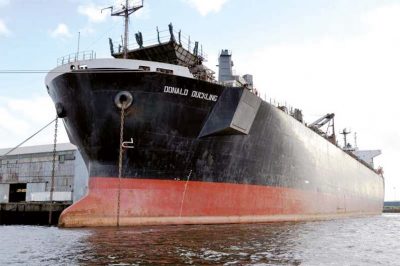
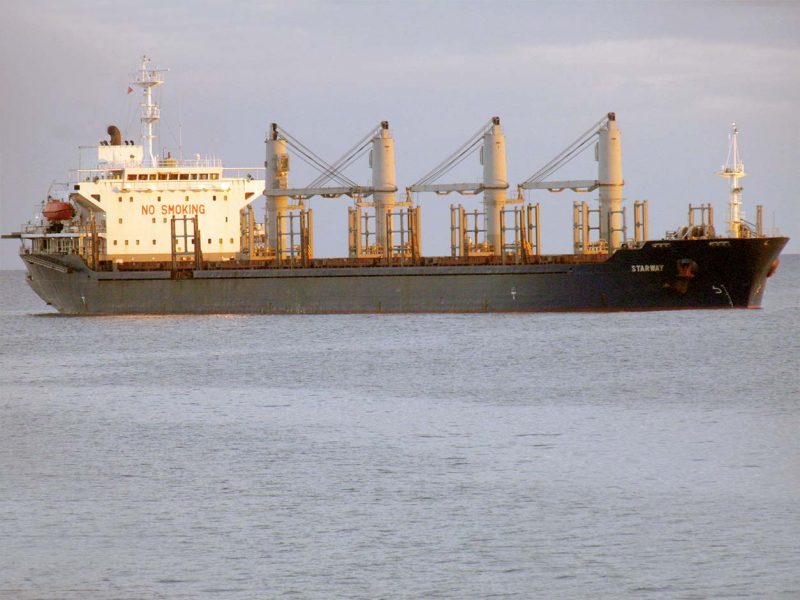
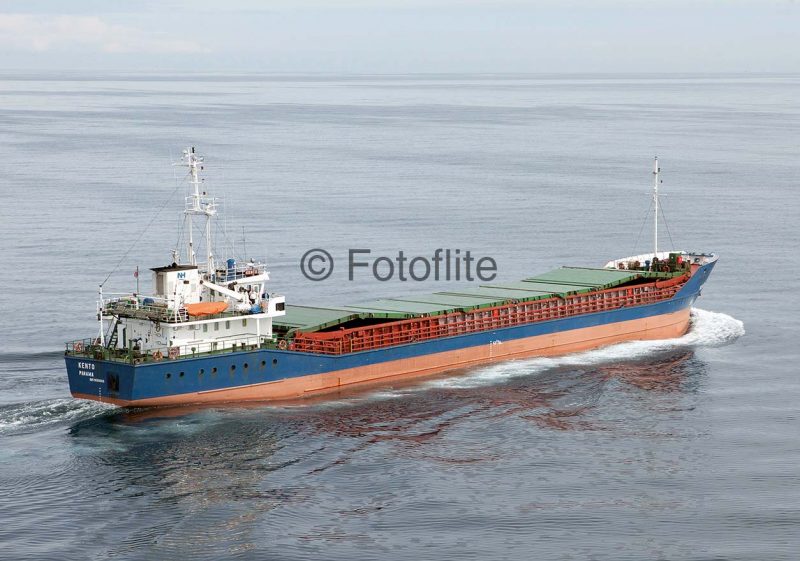
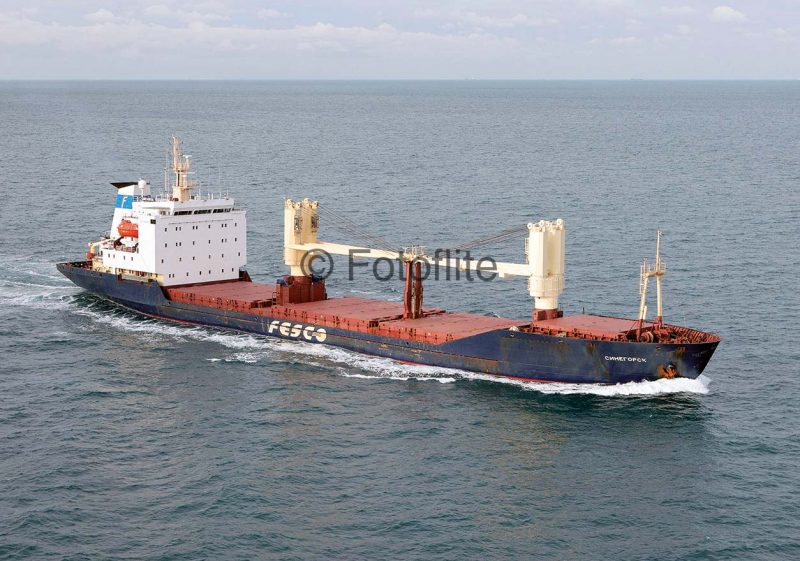
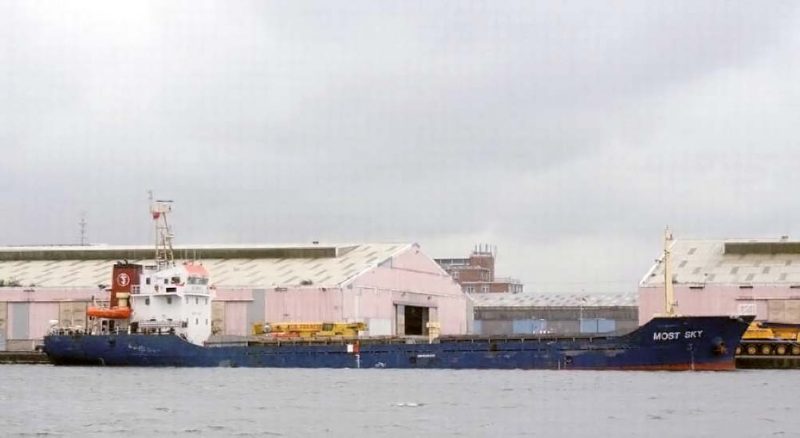
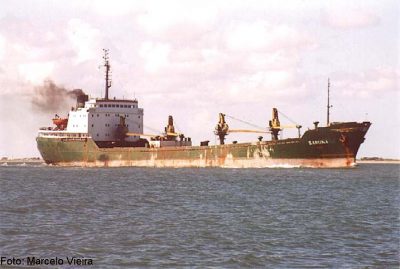
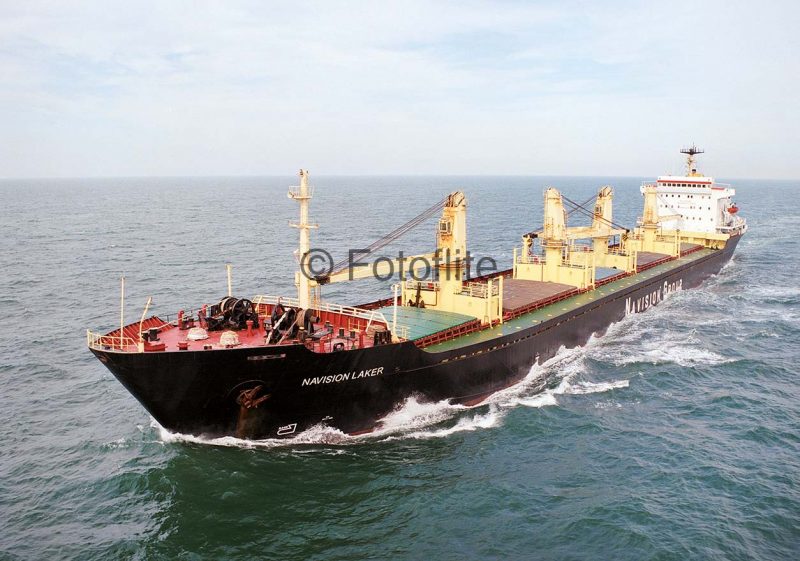
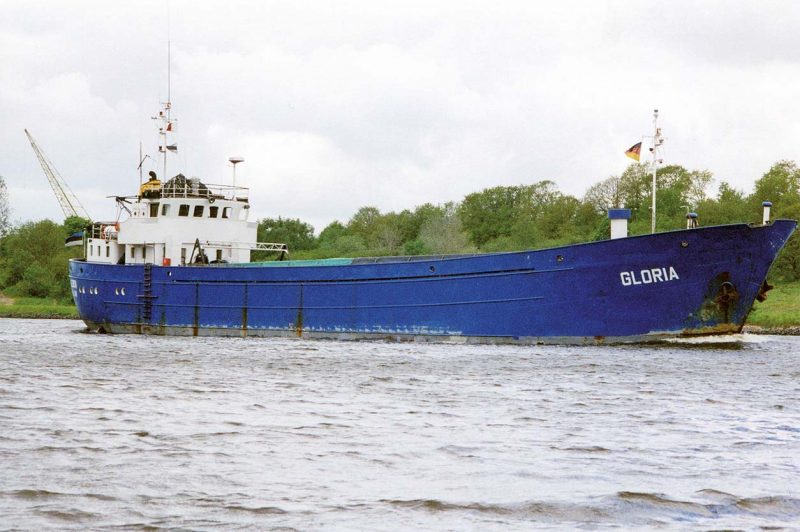

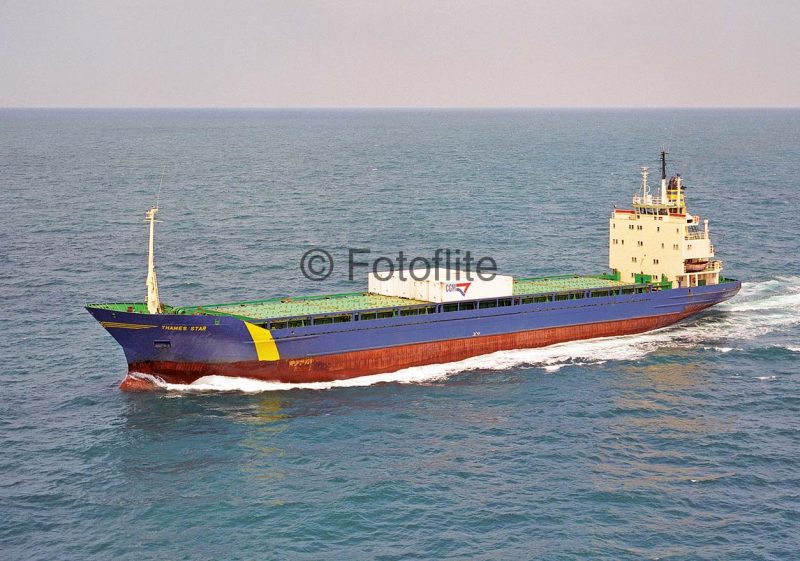

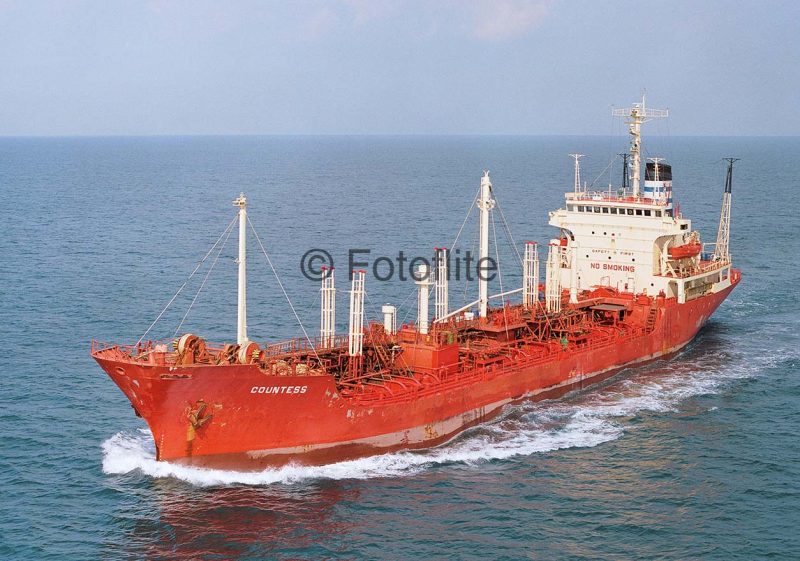
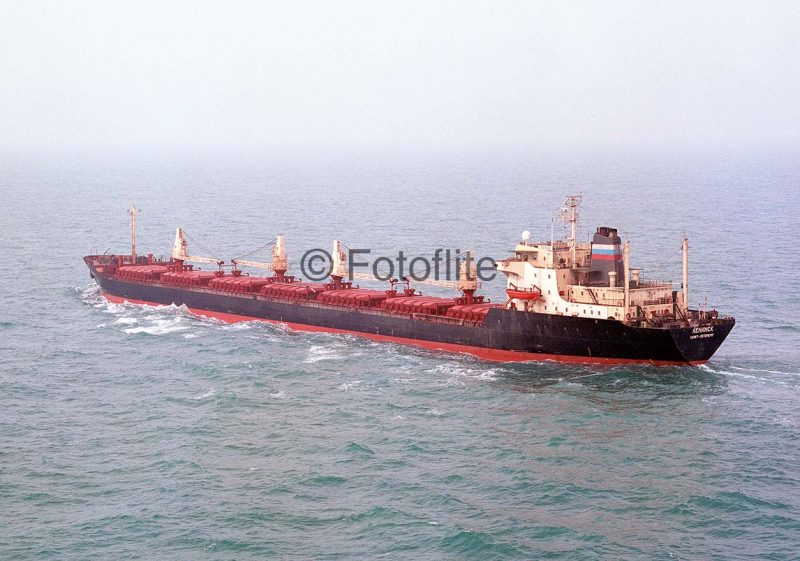
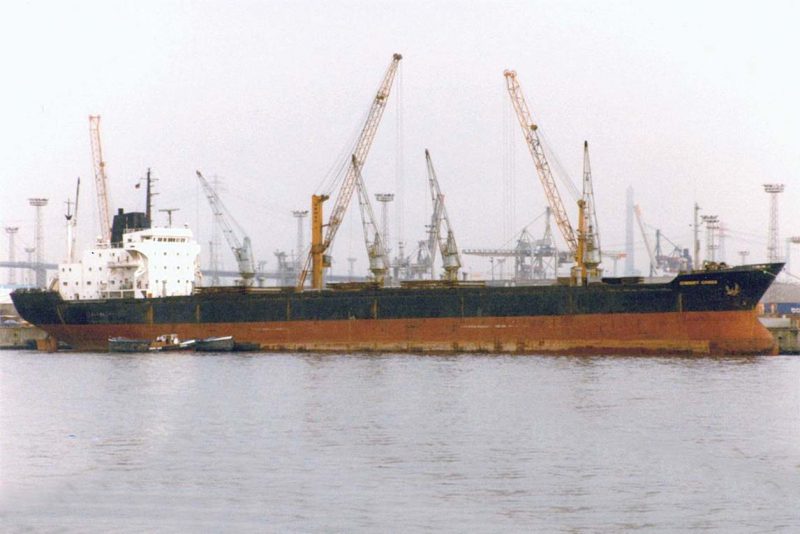
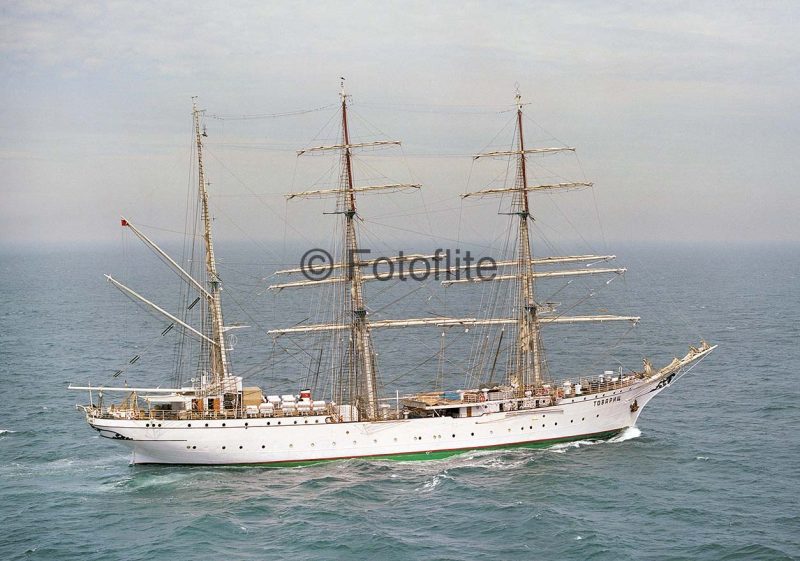

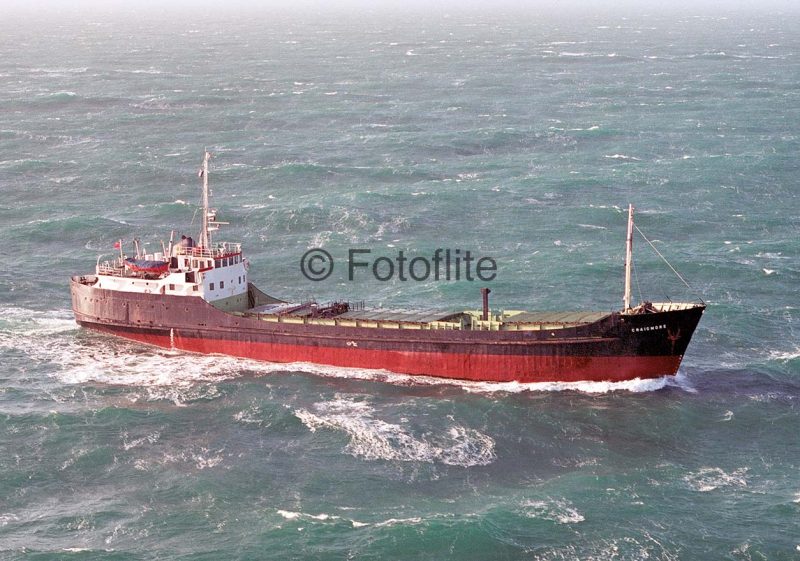
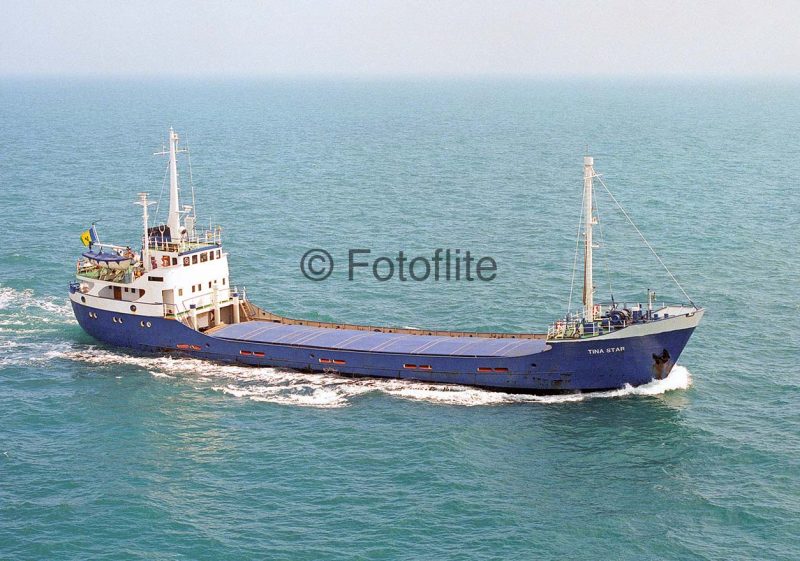
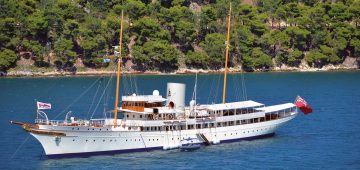
Comments
Sorry, comments are closed for this item